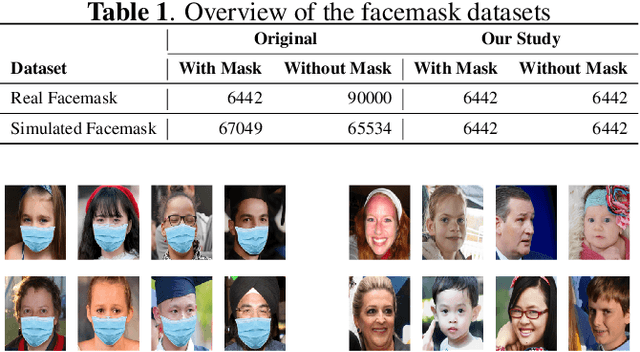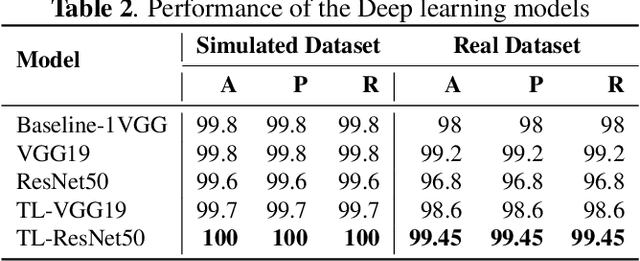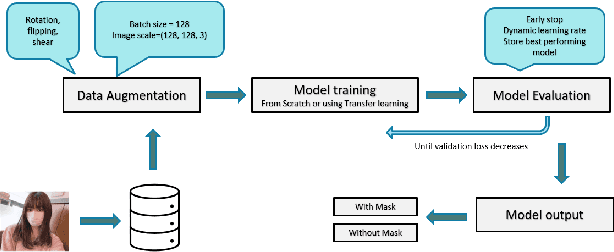Md Abdullah Al Alamin
A Comparative Analysis of Machine Learning Approaches for Automated Face Mask Detection During COVID-19
Dec 15, 2021



Abstract:The World Health Organization (WHO) has recommended wearing face masks as one of the most effective measures to prevent COVID-19 transmission. In many countries, it is now mandatory to wear face masks, specially in public places. Since manual monitoring of face masks is often infeasible in the middle of the crowd, automatic detection can be beneficial. To facilitate that, we explored a number of deep learning models (i.e., VGG1, VGG19, ResNet50) for face-mask detection and evaluated them on two benchmark datasets. We also evaluated transfer learning (i.e., VGG19, ResNet50 pre-trained on ImageNet) in this context. We find that while the performances of all the models are quite good, transfer learning models achieve the best performance. Transfer learning improves the performance by 0.10\%--0.40\% with 30\% less training time. Our experiment also shows these high-performing models are not quite robust for real-world cases where the test dataset comes from a different distribution. Without any fine-tuning, the performance of these models drops by 47\% in cross-domain settings.
Quality Assurance Challenges for Machine Learning Software Applications During Software Development Life Cycle Phases
May 03, 2021

Abstract:In the past decades, the revolutionary advances of Machine Learning (ML) have shown a rapid adoption of ML models into software systems of diverse types. Such Machine Learning Software Applications (MLSAs) are gaining importance in our daily lives. As such, the Quality Assurance (QA) of MLSAs is of paramount importance. Several research efforts are dedicated to determining the specific challenges we can face while adopting ML models into software systems. However, we are aware of no research that offered a holistic view of the distribution of those ML quality assurance challenges across the various phases of software development life cycles (SDLC). This paper conducts an in-depth literature review of a large volume of research papers that focused on the quality assurance of ML models. We developed a taxonomy of MLSA quality assurance issues by mapping the various ML adoption challenges across different phases of SDLC. We provide recommendations and research opportunities to improve SDLC practices based on the taxonomy. This mapping can help prioritize quality assurance efforts of MLSAs where the adoption of ML models can be considered crucial.
 Add to Chrome
Add to Chrome Add to Firefox
Add to Firefox Add to Edge
Add to Edge